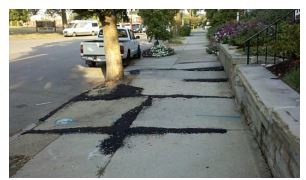
Fig. 8.2: Examples of Uplifts Repaired by Grinding (left) and Saw Cutting (right)
( http://service.govdelivery.com )
-
8.3 Asphalt Ramping/Patching
Asphalt ramping/patching involves using asphalt to form a ramp between the two levels of the uplift. This should be considered only as a temporary measure. Currently, some urgent uplifts (greater than and equal to 20 mm) are repaired using this type of temporary patch (see Figure 8.3). Asphalt is also used to repair high severity deficiencies on asphalt sidewalks. Repairs with asphalt are made on such items as: potholes, wide (high severity) cracks and ruts, and in some cases to level out a sidewalk to prevent ponding. In some (rare) cases, asphalt has also been used to overlay portions or even an entire sidewalk.

Fig. 8.3: Asphalt Patches on Sidewalk ( www.chpn.net )
-
8.4 MG-Krete Ramping/Patching
Just like asphalt ramping, MG-Krete is used to form a ramp between the two levels of uplift. Although this is considered a temporary fix, it lasts typically 5 years which is much longer than asphalt. Some other advantages of MG-Krete are: withstands wear better, cures very rapidly in all weather and temperature conditions, more aesthetically pleasing than asphalt, tenaciously bonds to concrete, and is very impervious/resistant to moisture, salt, gas, and oils. Currently, the majority of urgent uplifts (greater than and equal to 20 mm) are repaired using this type of temporary patch.